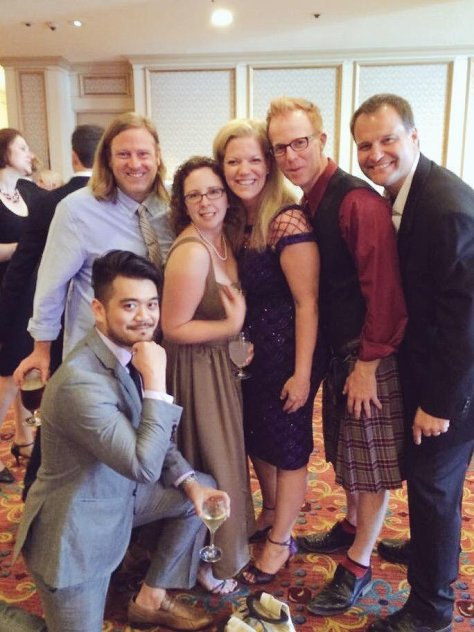
A producer is the closest thing the entertainment industry has to a parental figure. As the head of any production, this individual oversees every aspect from beginning to end and ensures that it all runs smoothly. It’s a tiresome and exhausting vocation, the main reward of which is getting more of the same work. A producer will tell you that they choose this vocation because they love the creative process and being surrounded by others who take part in it. For a successful producer, diversity is the key. Similar to directors, a producer’s work on a notable ad campaign can mean as much (or more) recognition and compensation than on a film or TV presentation. The career of Rafael Thomaseto encompasses all of these different creations, leaving him in the enviable position of having an eclectic body of work and possibilities to pursue. His resume encompasses a strong list of production credits, including independent films, commercials for major brands (such as Chanel, Samsung, Nissan and Jose Cuervo), the clip of the song “Perfect Illusion” by the iconic Lady Gaga and the production of videos for the YouTube. The common thread among all these is the talent and work ethic he possesses. The best advertisement is performing your job with excellence and the word is out about Thomaseto.
As producer of the film “Inherent Greed” (Directed by Zachary Wanerman), Rafael oversaw this production which premiered at the Cannes Film Festival and also impressed Louie Torrellas (CEO of Ambitious Media Productions). Torrellas relates, “One of the executive producers on the film recommended Rafael to my company, Ambitious Media, which was in charge of producing Inherent Greed. We hired him and he instantly took over the project and made it work, to great acclaim. Our first partnership was such a success that as soon as I received the briefing of the entire media production for LA Style Fashion Week, Rafael was the first name that popped into my mind. It was going to be a challenging job but I was sure he was qualified and experienced enough to handle it. Again, my expectations were attained. Once Rafael joins a project, he will do anything possible to make it work and to make it the best.”
Hired by Ambitious Media as head of production for the city’s biggest fashion event would seem to be a completely different environment than that of a soundstage or location shoot for a film however, Thomaseto’s skill set is equally applicable to both. Though Los Angeles Style Fashion Week has been around in some incarnation since the 70’s, the past decade has seen it evolve into a much more expansive and widely attended event. The city and the industry have taken an obvious step towards using their entertainment producing infrastructure to promote the fashion scene as a major player worldwide. While the surroundings and the players are different than the ones he is so accustomed to, many of the applications of Rafael’s abilities are lateral. Instead of overseeing a film production, he developed a documentary which showed the increase of the fashion scene in LA. Locating and hiring the director, cinematographer, and film/photography crew to shoot interviews with the major players in the fashion industry as well as the big name models who would be appearing at the event; all these were familiar procedures for Rafael though they were in a wildly differing venue. The producer notes that his ability to bring aboard world renowned fashion photographer Lemuel Punderson as the main director for the production was a particular source of pride.
A complete dichotomous experience of working with the beautiful people, Thomaseto’s past success on a number of productions for Traverse Media resulted in them hiring him as part of the production team for the experimental “Crypt TV.” Traverse Media, a production and talent management company committed to creative and enterprising content and filmmakers, hired Thomaseto as part of their Production team coordinating the project for Crypt TV. Crypt TV is a digital genre brand co-founded by Jack Davis and horror icon Eli Roth. Declaring its motto as “#WeirdIsGood”, Crypt TV creates and distributes dark, edgy, and scary video content on Facebook and across its family of publisher sites. One year after launch, with 2 million direct social followers and a syndication network of 2.5 million unique monthly visitors on the sites in its network, Crypt TV has quickly become the fastest growing leader in digital productions of this genre. In addition to working with the best up-and-coming filmmakers across the world, Crypt TV creates engaging original video content directly for the Top Hollywood Studios including: Universal, Fox, Warner Brothers, Paramount, Netflix, and others. Crypt TV is uniting fans and creating a movement that’s redefining what the future of the genre among millennials.
Although hired on shortly before the shoot, Rafael quickly solidified all aspects of the production of the three short films which Traverse created for Crypt TV: “Lust Kills” (62,000 VIEWS), “Gluttony Kills” (371,000 views), & Sloth Kills (272,000 views). These three films were produced in just a matter of weeks and had received several thousand views in a mere matter of hours after being released. The expediency and process by which entertainment is created and delivered continues to evolve with technology and the public’s sensitivity to it but the need for professionals like Rafael Thomaseto will be a constant throughout these changes, as will the need of entities like Ambitious Media Productions and Traverse Media. The upcoming projects which Thomaseto is currently involved in with both companies assures this fact. The new edition of LA Fashion Week (which is a biannual event), an indie feature film in 2018, and several short films (a continuation of his partnership with Crypt TV) will all add to the association that Rafael has with both Ambitious Media Productions and Traverse Media in the very near future.



















